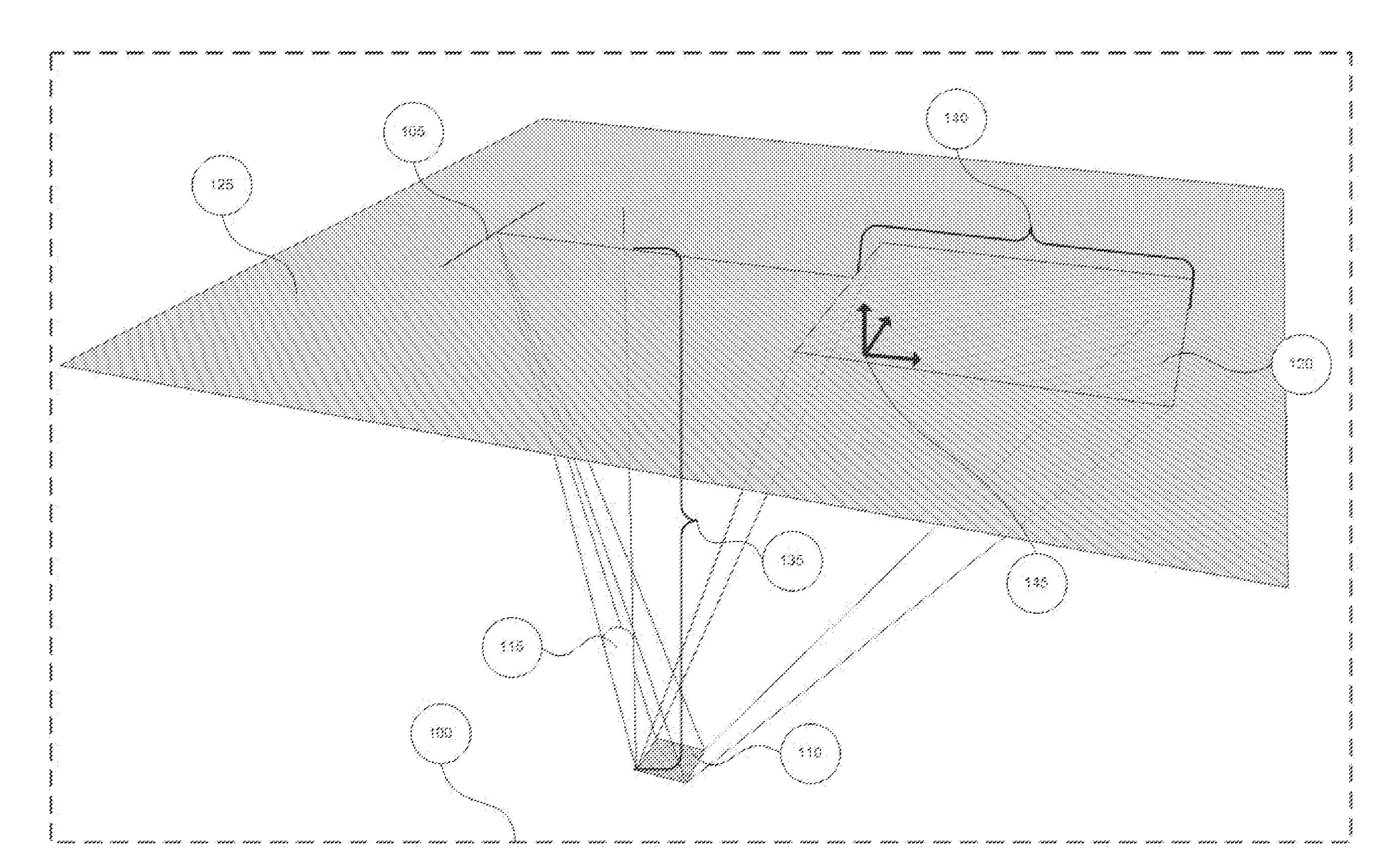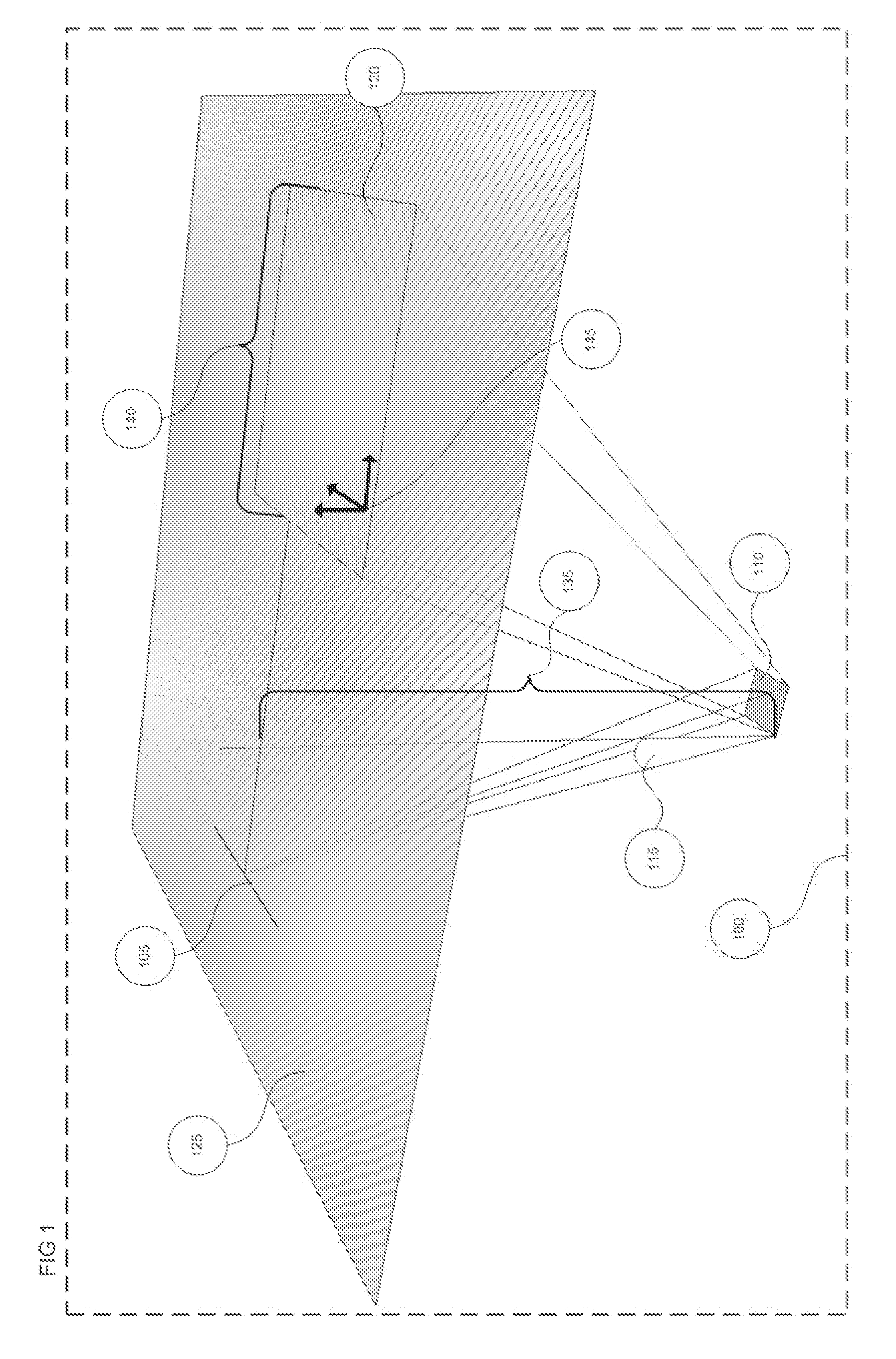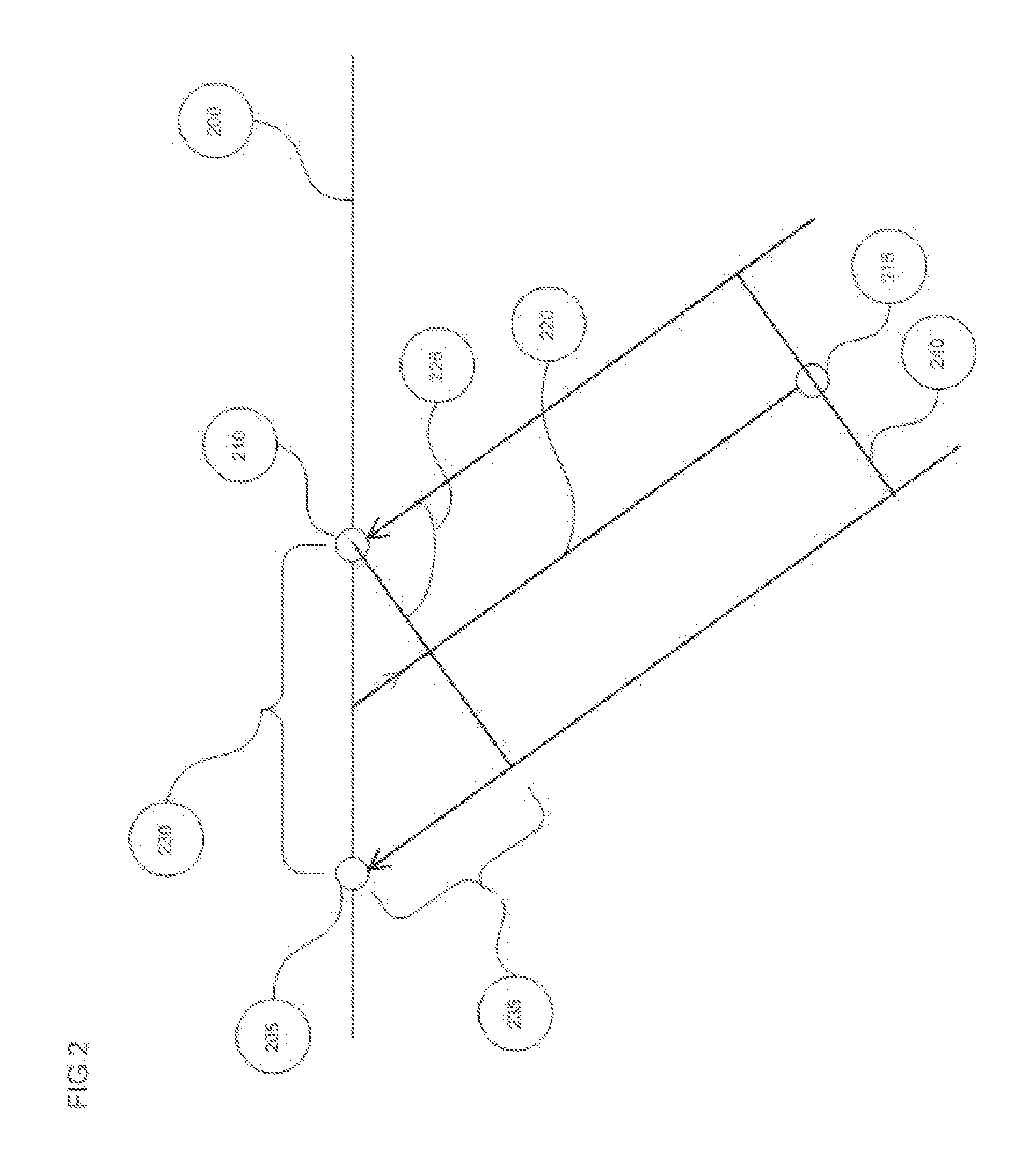System and Method Using Near and Far Field ULF and ELF Interferometry Synthetic Aperture Radar for Subsurface Imaging
a synthetic aperture radar and near and far field technology, applied in measurement devices, instruments, scientific instruments, etc., can solve the problems of high cost, complicated procedures, and high cost of fracturing operations, and achieve the effect of reducing or eliminating the phase unwrapping error
- Summary
- Abstract
- Description
- Claims
- Application Information
AI Technical Summary
Benefits of technology
Problems solved by technology
Method used
Image
Examples
second embodiment
[0091]In a second embodiment the interferometric system can use a technique of phase steering modified to produce phase focusing. The concept of phase steering is well understood in Radar Phase Array Antenna's. In the disclosed subject matter the phase steering is achieved by treating the receivers as transmitters and using the phase shifts between each to refer back to the object. This is also a well understood technique. The implication of using phase steering is that the invention must be capable of producing data from the receiver matrix that can be phase unwrapped or has a method for directly measuring phase.
[0092]Phase focusing is distinct from the process of phase steering in that instead of introducing the same phase shift for a receiver pair, a different phase shift for each is introduced such that the phase center for the receiver pair is adjusted toward a focal point.
[0093]Referring now to FIG. 4a. For a series of irregularly place receivers 405a, 405b and 405c on the sur...
third embodiment
[0096]A third embodiment uses a transmitted phase coherent PRB code designed to allow investigation of conductance and therefore phase velocity through the near field regime to intermediate field regime. Knowledge of the phase velocity in the upper strata will improve the likely hood of a unique solution to an image created through phase differences. Other codes are possible. The concept of near, intermediate and far field regimes within CSEM surveying can be understood by a person skilled in the art of CSEM surveying. The concept of a PRB code can be understood by a person skilled in the art of spread spectrum transmission schemes.
fourth embodiment
[0097]In one embodiment the depth information is collapsed to a single image plane, depicted in FIG. 1. A set of image planes are created at each conductive interface. Depth information can be recovered by using the Radar sounding timing technique of the
[0098]In a fourth embodiment, Radar sounding timing data can be found as follows: The transmitter transmits at a fixed rate with a transmit time synchronized to the GPS synchronizing clock. A plurality of receivers is also synchronized to the GPS synchronizing clock. By the framing method, a receiver is able to detect EM transit times from the transmitter to a responding formation and back to the receiver antenna. The transit time is defined as follows:
T=Dt→f / c*Vp+Td+Df→r / c*Vp eqn. (4)
Where:
[0099]T=transition time
[0100]Dt→f=Distance from transmitter to target formation
[0101]Df→r=Distance from target formation to receiver
[0102]c=velocity of the EM signal in a vacuum
[0103]Vp=Velocity of propagation of EM signal in the formation
Vp can ...
PUM
 Login to View More
Login to View More Abstract
Description
Claims
Application Information
 Login to View More
Login to View More - R&D
- Intellectual Property
- Life Sciences
- Materials
- Tech Scout
- Unparalleled Data Quality
- Higher Quality Content
- 60% Fewer Hallucinations
Browse by: Latest US Patents, China's latest patents, Technical Efficacy Thesaurus, Application Domain, Technology Topic, Popular Technical Reports.
© 2025 PatSnap. All rights reserved.Legal|Privacy policy|Modern Slavery Act Transparency Statement|Sitemap|About US| Contact US: help@patsnap.com



